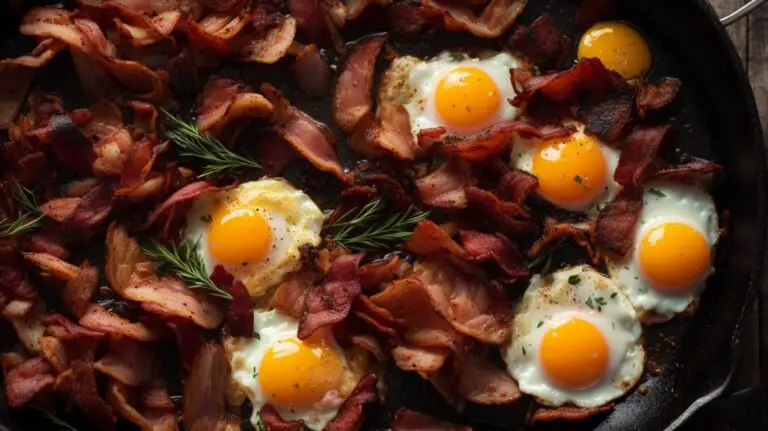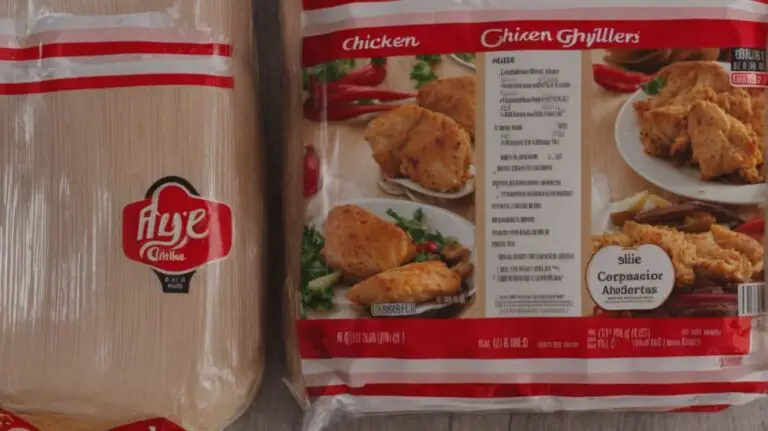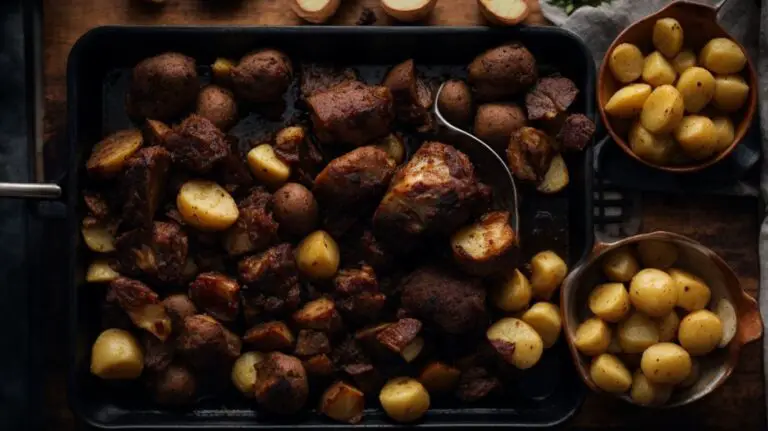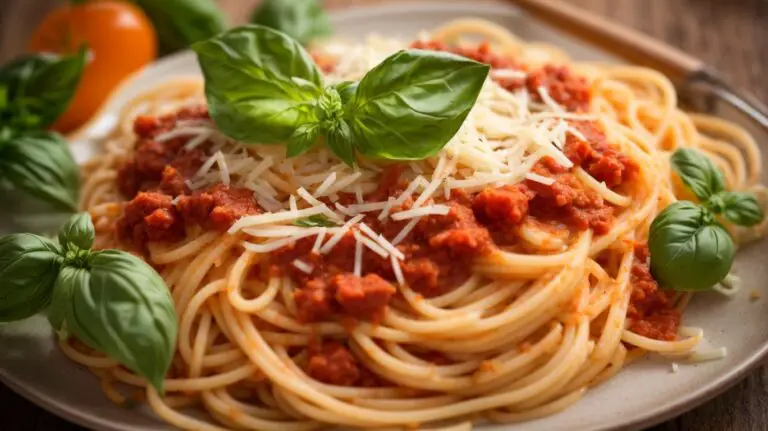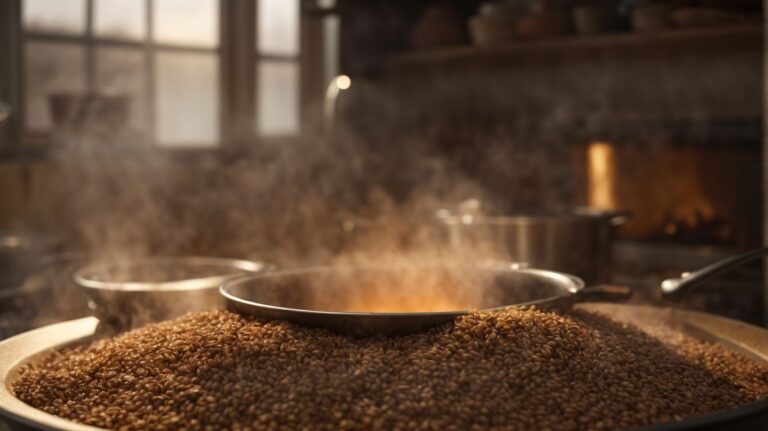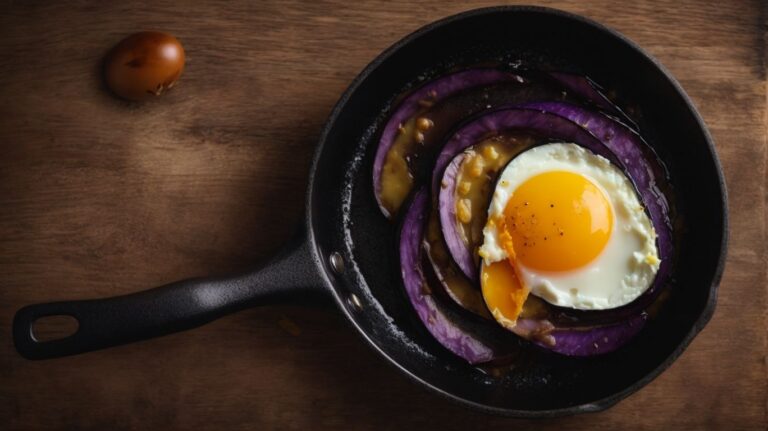How to Cook Frozen Shrimp?
Welcome to another culinary adventure on Poormet.com! Today, we’re diving into the world of cooking frozen shrimp.
Have you ever wondered why it’s beneficial to cook shrimp straight from the freezer? Or perhaps you’re curious about the different types of frozen shrimp available?
In this article, we’ll explore the benefits of cooking frozen shrimp, how to properly thaw them, different methods of cooking, and tips and tricks to ensure a delicious outcome.
So grab a seat and let’s get cooking!
Key Takeaways:
Why Cook Frozen Shrimp?
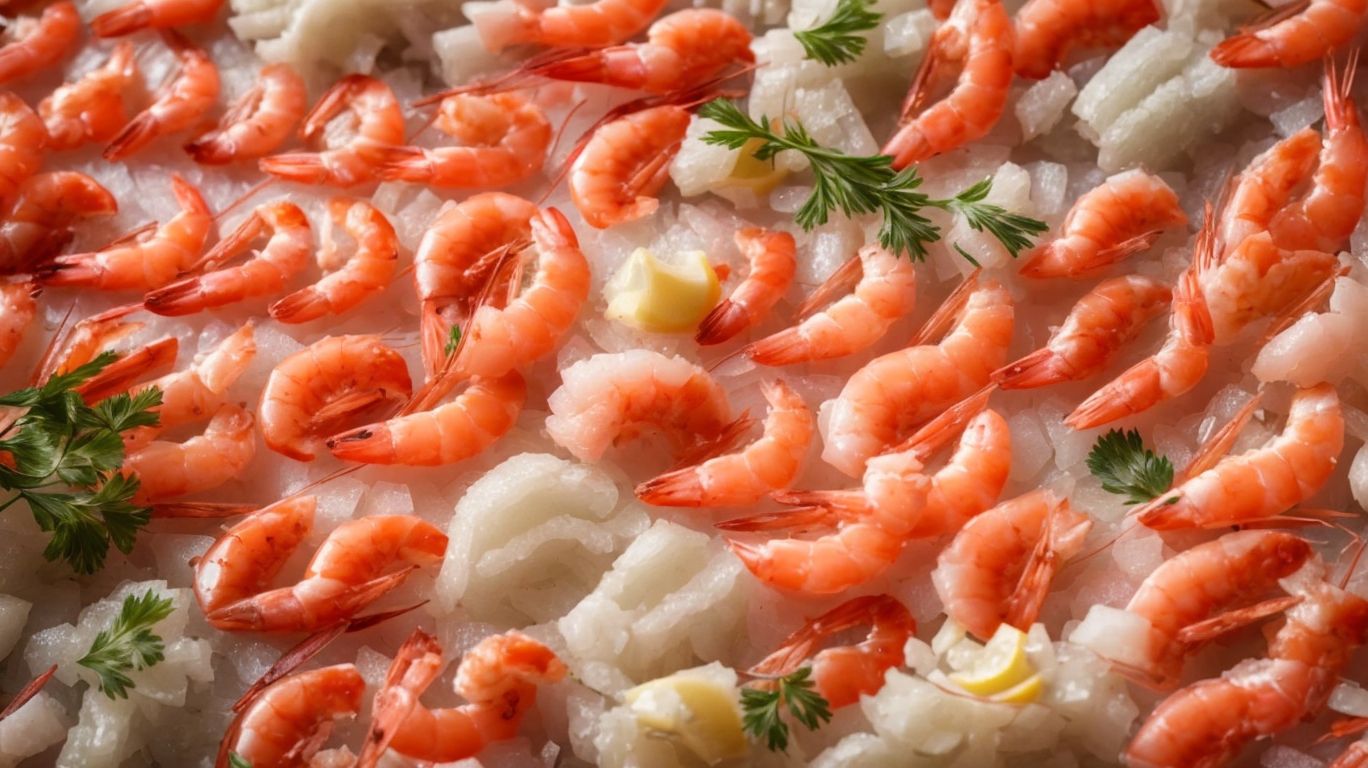
Credits: Poormet.Com – Robert Harris
Cooking frozen shrimp offers convenience and versatility in meal preparation, ensuring that you always have a quick and easy seafood option available.
When you cook frozen shrimp, you eliminate the need for lengthy thawing times, allowing you to whip up flavorful dishes in a pinch. Whether you’re in the mood for savory shrimp scampi, zesty shrimp tacos, or a refreshing shrimp salad, the frozen seafood offers endless culinary possibilities. Cooking shrimp from frozen helps retain its natural flavors and textures, giving you a delicious outcome every time. With frozen shrimp, you can effortlessly add a touch of elegance to your weekday dinners or elevate your weekend gatherings with minimal effort.
What Are the Benefits of Cooking Frozen Shrimp?
The benefits of cooking frozen shrimp include preserving freshness, extending shelf life, and simplifying meal planning for busy individuals.
When you use frozen shrimp, you eliminate the worry of spoilage, ensuring that you always have a quick and delicious protein option on hand. This not only saves time but also reduces food waste.
Frozen shrimp are usually pre-cleaned and deveined, saving you valuable preparation time. Whether you’re whipping up a quick weeknight stir-fry or planning an elaborate seafood feast, having frozen shrimp in your freezer allows you to be versatile and spontaneous in your cooking.
By having frozen shrimp at your disposal, you can easily control portion sizes, making it convenient for meal prepping and sticking to dietary goals.
What Are the Different Types of Frozen Shrimp?
Various types of frozen shrimp are available, including raw, pre-cooked, breaded, and deveined options to cater to different culinary preferences and cooking styles.
Raw shrimp offers the flexibility of seasoning and cooking methods, perfect for grilling, frying, or adding to soups and stir-fries. Pre-cooked shrimp, on the other hand, come in handy for quick meals, salads, or as a topping for pizzas. Breaded shrimp, coated in crispy breading, offer a convenient option for appetizers or main dishes. Deveined shrimp, with the vein removed for ease of consumption, are particularly popular for pasta dishes or shrimp cocktails. Each variety brings its unique flavor and texture to enhance a wide range of recipes.
How to Properly Thaw Frozen Shrimp
Thawing frozen shrimp correctly is crucial to ensure optimal texture and flavor in your dishes, requiring attention to proper methods and techniques.
One common and effective method to defrost frozen shrimp is to transfer them from the freezer to the refrigerator and allow them to thaw slowly overnight. This gradual process helps maintain the shrimp’s natural moisture and prevents texture alteration. However, if you need to speed up the thawing process, placing the frozen shrimp in a sealed plastic bag and submerging them in cold water for about 30 minutes can also work well. Remember to never thaw shrimp at room temperature as it can lead to bacterial growth and loss of flavor. Take these steps to ensure delightful shrimp dishes every time!
What Are the Different Methods for Thawing Frozen Shrimp?
Thawing frozen shrimp can be done through several methods such as refrigeration, cold water submersion, and microwave defrosting, offering flexibility based on time constraints and preferences.
Refrigeration is the most common method, requiring you to place the frozen shrimp in the fridge overnight. This gradual process ensures a safe thaw without sacrificing the shrimp’s quality. Cold water submersion is quicker, where you seal the shrimp in a leak-proof bag and submerge it in a bowl of cold water. Remember to change the water every 30 minutes. If you’re short on time, microwave defrosting can be convenient, but it requires careful monitoring to prevent cooking the shrimp prematurely. Each method has its benefits, so choose the one that suits your needs best.
What Are the Do’s and Don’ts of Thawing Frozen Shrimp?
When thawing frozen shrimp, it is important to follow food safety guidelines, avoid prolonged exposure to room temperature, and refrain from refreezing previously thawed shrimp.
Thawing shrimp correctly is crucial to prevent harmful bacteria growth and ensure the quality of the seafood. To thaw frozen shrimp safely, consider using the refrigerator overnight or placing the shrimp in a sealed plastic bag within a bowl of cold water. Never thaw shrimp at room temperature or under running water as this can lead to bacteria multiplication. Once the shrimp is thawed, cook it promptly to prevent any foodborne illnesses. Remember that refreezing shrimp that has been previously thawed can affect its texture and flavor.
Prepping Frozen Shrimp for Cooking
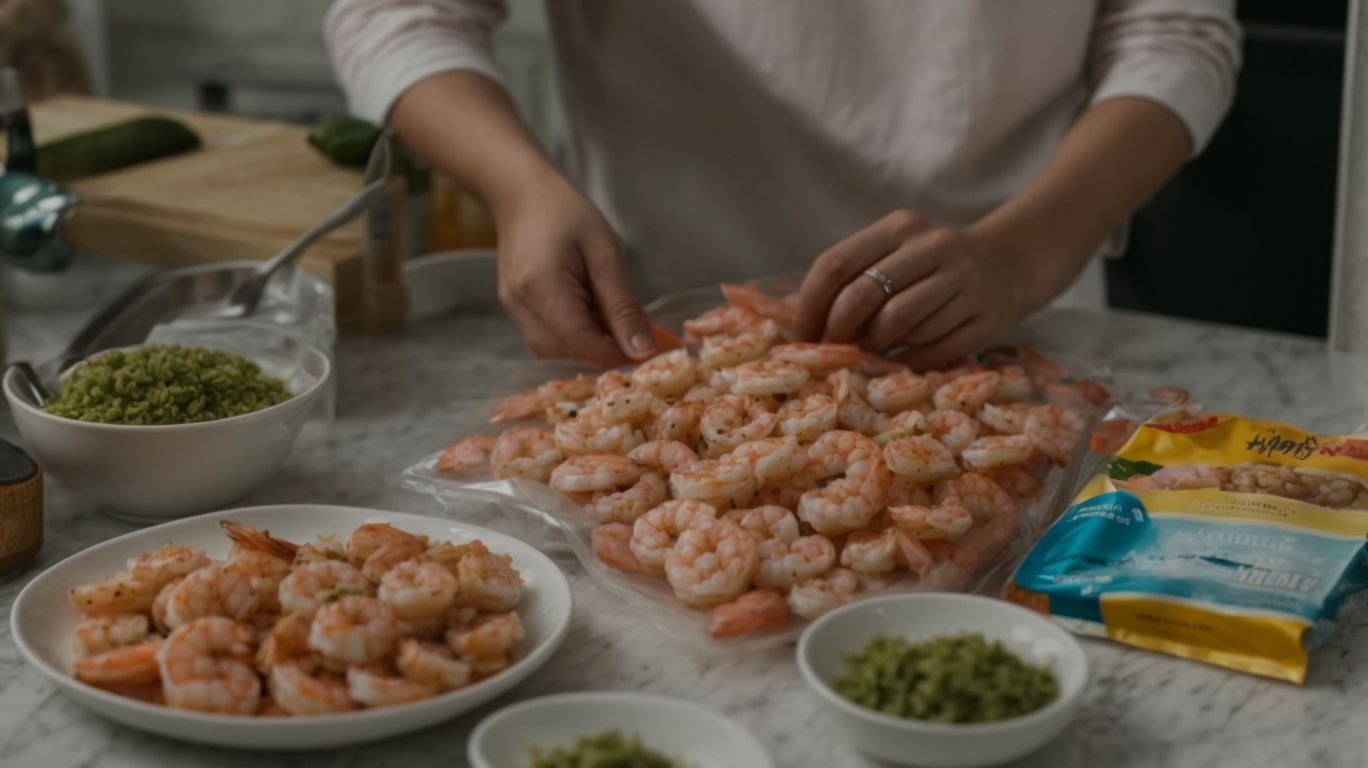
Credits: Poormet.Com – Jacob Roberts
Preparing frozen shrimp for cooking involves steps like peeling, deveining, and seasoning to enhance the natural flavors and ensure even distribution of spices.
To start, when working with frozen shrimp, it’s essential to thaw them properly. The best way to do this is by placing them in the refrigerator overnight or running them under cold water for quicker thawing. Once they are thawed, the next step is peeling off the outer shell.
You can start by gently pulling off the legs and then working your way from the head down to the tail. Deveining is the next crucial step where you remove the dark vein running along the back of the shrimp. This can be done by making a shallow cut with a sharp knife and then pulling out the vein. After peeling and deveining, season the shrimp generously with your favorite spices and herbs to infuse them with flavor. Make sure to toss them well to evenly coat each piece.
By following these steps, you’ll be able to prepare frozen shrimp in a way that enhances their natural taste and ensures delicious results.
How to Peel and Devein Frozen Shrimp?
Peeling and deveining frozen shrimp is a meticulous task that involves removing the outer shell and the digestive tract, enhancing the appearance and taste of the cooked shrimp.
To start, place the frozen shrimp in a colander under cold running water to thaw. Once partially thawed, gently peel off the shell starting from the legs towards the tail. Be careful not to damage the flesh.
Next, devein the shrimp by using a small sharp knife to make a shallow incision along the back of the shrimp and remove the dark vein running along it. Rinse the shrimp under cold water to clean out any remaining debris. This process not only improves the presentation of your dish but also removes any potential grittiness or off-flavors from the shrimp.
How to Season Frozen Shrimp?
Seasoning frozen shrimp can be done using a variety of flavorings such as spice blends, garlic powder, cajun seasoning, or a simple mix of olive oil and butter for a burst of flavor.
Adding a zesty lemon herb marinade to your shrimp before grilling can elevate the taste to a whole new level. Alternatively, you can try a sweet and spicy Asian-inspired sauce with soy sauce, ginger, and honey for a fusion of flavors. For a Mediterranean twist, consider a blend of oregano, basil, and thyme mixed with chopped tomatoes and feta cheese for a refreshing taste. The key is to experiment with different combinations to find your perfect shrimp seasoning!
Methods for Cooking Frozen Shrimp
Cooking frozen shrimp presents multiple methods such as pan-frying, grilling, baking, and boiling, each offering unique textures and flavors to suit different preferences.
When opting for pan-frying, you can achieve a crispy exterior with a tender inside, enhancing the natural sweetness of the shrimp.
Grilling shrimp provides a delicious smoky flavor and beautiful grill marks, perfect for summer gatherings.
Baking shrimp results in a moist and tender texture, ideal for dishes like shrimp scampi.
On the other hand, boiling shrimp offers a quick and simple cooking method, retaining their natural juiciness.
Pan-Frying Frozen Shrimp
Pan-frying frozen shrimp involves searing them in a hot skillet with butter and olive oil until they turn pink and tender, offering a quick and delicious cooking method.
To ensure that your frozen shrimp comes out perfectly pan-fried, start by thawing them properly if they are not pre-cooked, as this will help them cook evenly and achieve that desirable golden brown exterior.
- Season your shrimp with your favorite herbs and spices for added flavor, such as garlic, paprika, or lemon zest, before placing them in the hot skillet.
- Make sure not to overcrowd the pan to prevent steaming the shrimp; this way, they will sear nicely and develop a crispy texture.
Grilling Frozen Shrimp
Grilling frozen shrimp on a preheated grill imparts a smoky flavor and charred marks, enhancing the natural sweetness of the shrimp for a delectable outdoor dining experience.
When preparing frozen shrimp for the grill, start by thawing them beforehand to ensure even cooking. To infuse the shrimp with flavor, consider marinating them in a mixture of olive oil, lemon, garlic, and herbs for at least 30 minutes. Once marinated, thread the shrimp onto skewers to prevent them from falling through the grill grates.
Regarding grilling, make sure the grill is hot before placing the shrimp on it to achieve those beautiful grill marks. Cook the shrimp for about 2-3 minutes per side or until they turn pink and opaque, being careful not to overcook them as they can quickly become rubbery.
Baking Frozen Shrimp
Baking frozen shrimp in the oven on a baking sheet with seasoning results in succulent and flavorful shrimp that can be served as a standalone dish or added to pasta, salads, or tacos.
To ensure your shrimp cooks evenly, preheat your oven to 375°F. Lay the frozen shrimp in a single layer on the baking sheet, allowing some space between each piece for proper airflow. Depending on the size of the shrimp, bake for about 10-15 minutes until they turn pink and opaque. For seasoning, a simple mix of olive oil, garlic, lemon juice, salt, and pepper can elevate the flavors. Once baked, these shrimp can be served over a bed of quinoa and roasted veggies for a nutritious meal option.
Boiling Frozen Shrimp
Boiling frozen shrimp in seasoned water or broth provides a quick and easy cooking option, ideal for shrimp cocktail sauces or adding to pasta dishes for a light and flavorful meal.
When boiling frozen shrimp, it’s important to ensure that the cooking liquid is well-seasoned to impart maximum flavor into the shrimp. The seasoned water or broth not only infuses the shrimp with delicious taste but also helps enhance the overall dish it is used in.
Seasonings such as garlic, lemon, bay leaves, and pepper can elevate the taste of the shrimp during the boiling process, creating a delectable base for various recipes.
Cooking times play a crucial role in boiling shrimp to perfection. Overcooking can result in tough and rubbery shrimp, while undercooking may pose health risks.
How to Know When Frozen Shrimp Is Cooked?
Determining the doneness of frozen shrimp involves observing color changes, texture firmness, and internal temperature to ensure that they are cooked through and safe to eat.
When checking frozen shrimp for doneness, one key visual cue is the transformation of their translucent appearance to a pearly white color. This change indicates that the shrimp has been adequately cooked. The texture should shift from soft and squishy to firm and slightly springy. These texture changes signify the structural modifications that occur during the cooking process. Another crucial aspect to consider is the internal temperature of the shrimp.
Properly cooked shrimp should reach an internal temperature of 120°F to 145°F, ensuring that harmful bacteria are eliminated and the shrimp is safe for consumption. By paying attention to these indicators, you can master the art of cooking frozen shrimp to perfection.
Tips and Tricks for Cooking Frozen Shrimp
Enhance your frozen shrimp cooking skills with expert tips such as marinating for extra flavor, using a meat thermometer for precise cooking, and experimenting with different spice blends for variety.
If you want to infuse your shrimp with bold and vibrant flavors, consider marinating them in a mixture of citrus juices and aromatic herbs. This not only tenderizes the shrimp but also adds a zesty kick to every bite. Utilizing a meat thermometer ensures that your shrimp are cooked to perfection, preventing overcooking which can result in tough and rubbery texture. Regarding spice blends, think beyond the usual options and try a mixture of smoked paprika, garlic powder, and cayenne pepper for a fiery twist that will awaken your taste buds.
Conclusion
Cooking frozen shrimp opens up a world of culinary possibilities, offering convenience, flavor versatility, and easy meal solutions for seafood enthusiasts.
Frozen shrimp serves as a time-saving ingredient that requires minimal preparation, making it ideal for quick weeknight dinners or last-minute meals.
Whether you prefer to sauté, grill, bake, or even air-fry your shrimp, the cooking process is straightforward and delivers delicious results.
The versatility of frozen shrimp extends beyond just main dishes – they can be added to salads, stir-fries, pastas, tacos, and more, adding a boost of protein and a hint of the sea to your favorite recipes.
Frequently Asked Questions
How to Cook Frozen Shrimp?
Frozen shrimp is a versatile and convenient ingredient to have on hand for quick and easy meals. Here are six ways to cook it perfectly every time.
What is the best way to thaw frozen shrimp before cooking?
The safest and most effective way to thaw frozen shrimp is to place it in the refrigerator overnight. This allows for a slow and even thawing process.
Can I cook frozen shrimp without thawing it first?
Yes, you can cook frozen shrimp without thawing it first. Just be sure to adjust the cooking time as it may take a bit longer to cook through.
How do I know when frozen shrimp is fully cooked?
Frozen shrimp is fully cooked when it turns pink and opaque. If you’re unsure, use a thermometer to check that the internal temperature has reached 145°F.
What are some flavorful seasonings or marinades for cooking frozen shrimp?
You can use a variety of seasonings and marinades to add flavor to frozen shrimp, such as garlic, lemon, Cajun seasoning, and teriyaki sauce.
Are there any safety precautions to keep in mind when cooking frozen shrimp?
Always make sure to handle frozen shrimp safely and cook it thoroughly to avoid any risk of foodborne illness. It’s also important to store it properly in the freezer to maintain its quality.


